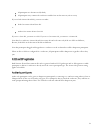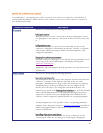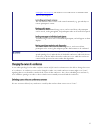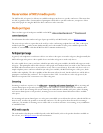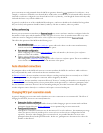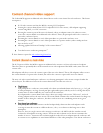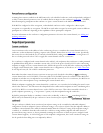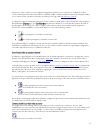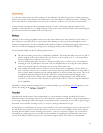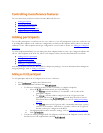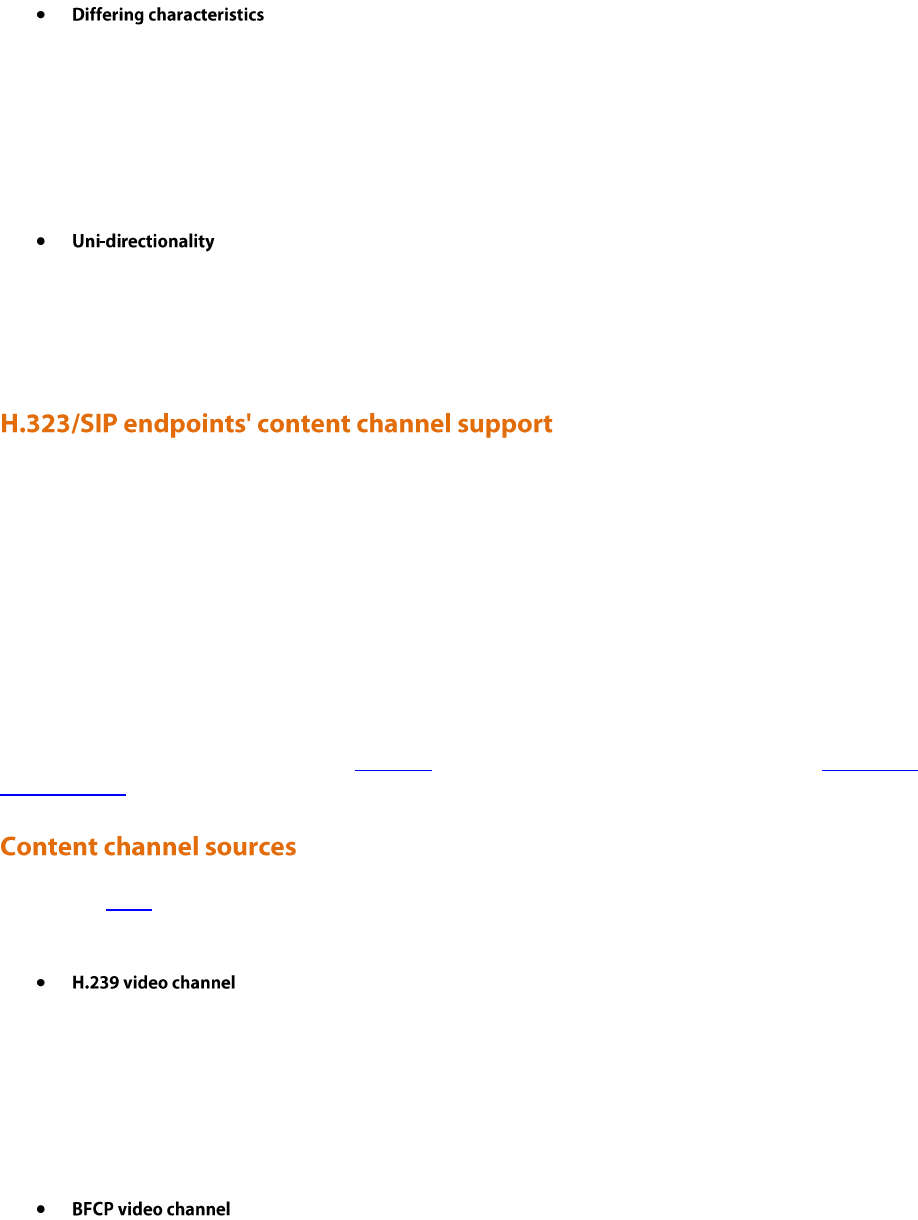
42
that use encryption, the MCU can send encrypted and unencrypted content to different participants in the
same conference (albeit with the same encryption key for every participant receiving encrypted content).
The range of bit rates, resolutions and frame rates available to the MCU for sending the content channel via
H.239 to H.323 video conferencing endpoints is potentially as wide as that for the main video channel.
However, in general, the main video channel is used for motion video (i.e. high frame rate streams) and the
content channel for less dynamic video such as an accompanying presentation - typically high resolution, low
frame rate.
However, the MCU allows flexibility in terms of nominating which of the available streams forms the
content channel, as well as allowing control over which endpoints are permitted to start contributing
content video.
For the main video channel, a video conferencing endpoint would normally be both contributing (sending) a
video stream to the MCU and receiving a video stream from it.
However the content channel works differently in that an endpoint can either be sending content video or
receiving content video, but not both. A given endpoint may switch between being the contributor and a
viewer during the conference, but it will never be both simultaneously.
For H.323 endpoints, depending on the specific endpoint and how it is configured, the content video stream may be
displayed on a separate screen, or the endpoint may show the main video and the content video streams side by side
on the same screen.
Irrespective of its content receive capability, an endpoint may or may not be able to contribute the content channel -
typically, for this to be possible it will either need a second camera or some other video input such as a VCR or
"video in" connection.
Some H.323 endpoints may have no support for the H.239 protocol and the MCU does not send the content channel
video to SIP endpoints. However, it is still possible for such endpoints to display the content channel - the MCU is
able to show the content channel within a normal view pane in the same way as it displays other conference
participants. This ability is controlled by the unit-wide Display content in normal video channel setting (see Configuring
content settings).
As described above, a conference's content channel as sent to the set of receiving endpoints has a single source. There
are several possible content channel sources:
This is the most conventional content channel behavior - a H.323 conference participant opens a H.239
channel to the MCU and contributes a video stream, such as that supplied by a second camera or an attached
PC.
Because there can be at most one content channel source, the H.323 endpoint needs to make a request to
the MCU, and have that request accepted, before actual content channel contribution can start. If the
conference already has an active content channel (for example, another endpoint is contributing H.239
video), the new request will be rejected by the MCU - it will be necessary to wait for the active contributor
to cease sending H.239 video before the new endpoint is able to start.
BFCP (Binary Floor Control Protocol) is a protocol that allows for an additional video channel (known as the



